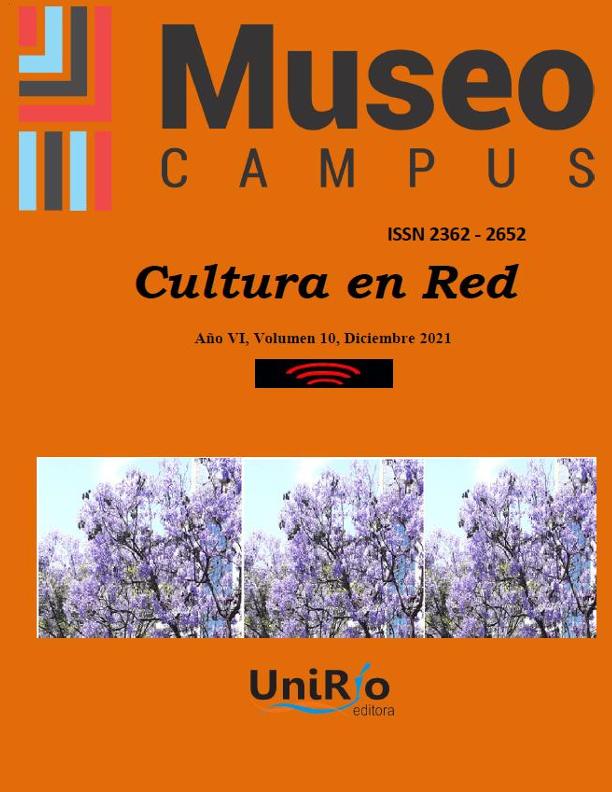Mostrar el registro sencillo del ítem
dc.contributor.author
Da Silva Catela, Gilda Veronica Ludmila

dc.date.available
2022-10-04T18:01:07Z
dc.date.issued
2021-12
dc.identifier.citation
Da Silva Catela, Gilda Veronica Ludmila; Museos, Modelos para armar y (des)armar memorias; Universidad Nacional de Río Cuarto; Cultura en Red; 10; 1; 12-2021; 144-162
dc.identifier.uri
http://hdl.handle.net/11336/171798
dc.description.abstract
En este texto me interesa analizar dos formas de museos que de alguna manera se oponen a los grandes proyectos memorialísticos, muchas veces desterritorializados y atravesadas por historias de poder y dominación del “otro” allí representado. Me refiero a los museos locales y a los sitios de memoria, como proyectos donde el recuerdo y los objetos cumplen una función política, ya sea representar “al pueblo” en el pueblo mismo o traer al presente la memoria de los muertos y desaparecidos. Si bien no son unidades comparables en cuanto a su contenido o proyectos de institucionalización, pueden tornarse unidades comparables ya que usan la memoria como recurso político disponible para decir algo y, por otro lado, conjugan ética y estética de manera creativa y territorializada. Finalmente, unos y otros pueden ser pensados como “aparatos ideológicos de la memoria” al decir de Candau (2001).
dc.description.abstract
In this text I am interested in analyzing two forms of museums that are somehow opposed to the great memorial projects, often deterritorialized and traversed by stories of power and domination of the "other" represented there. I am referring to local museums and sites of memory, as projects where memory and objects fulfill a political function, whether it be representing “the people” in the town itself or bringing the memory of the dead and disappeared to the present. Although they are not comparable units in terms of their content or institutionalization projects, they can become comparable units since they use memory as a political resource available to say something and, on the other hand, they combine ethics and aesthetics in a creative and territorialized way. Finally, both can be thought of as "ideological devices of memory" according to Candau (2001).
dc.format
application/pdf
dc.language.iso
spa
dc.publisher
Universidad Nacional de Río Cuarto
dc.rights
info:eu-repo/semantics/openAccess
dc.rights.uri
https://creativecommons.org/licenses/by-nc-sa/2.5/ar/
dc.subject
Museos
dc.subject
Memoria
dc.subject
Patrimonio
dc.subject
Territorialidad
dc.subject.classification
Otras Humanidades

dc.subject.classification
Otras Humanidades

dc.subject.classification
HUMANIDADES

dc.title
Museos, Modelos para armar y (des)armar memorias
dc.title
Museums, Models for assembling and (des)assembling memories
dc.type
info:eu-repo/semantics/article
dc.type
info:ar-repo/semantics/artículo
dc.type
info:eu-repo/semantics/publishedVersion
dc.date.updated
2022-09-22T00:41:27Z
dc.identifier.eissn
2362-2652
dc.journal.volume
10
dc.journal.number
1
dc.journal.pagination
144-162
dc.journal.pais
Argentina

dc.journal.ciudad
Río Cuarto
dc.description.fil
Fil: Da Silva Catela, Gilda Veronica Ludmila. Consejo Nacional de Investigaciones Científicas y Técnicas. Centro Científico Tecnológico Conicet - Córdoba. Instituto de Antropología de Córdoba. Universidad Nacional de Córdoba. Facultad de Filosofía y Humanidades. Instituto de Antropología de Córdoba; Argentina
dc.journal.title
Cultura en Red
dc.relation.alternativeid
info:eu-repo/semantics/altIdentifier/url/http://www2.hum.unrc.edu.ar/ojs/index.php/CR/article/view/1419
Archivos asociados
